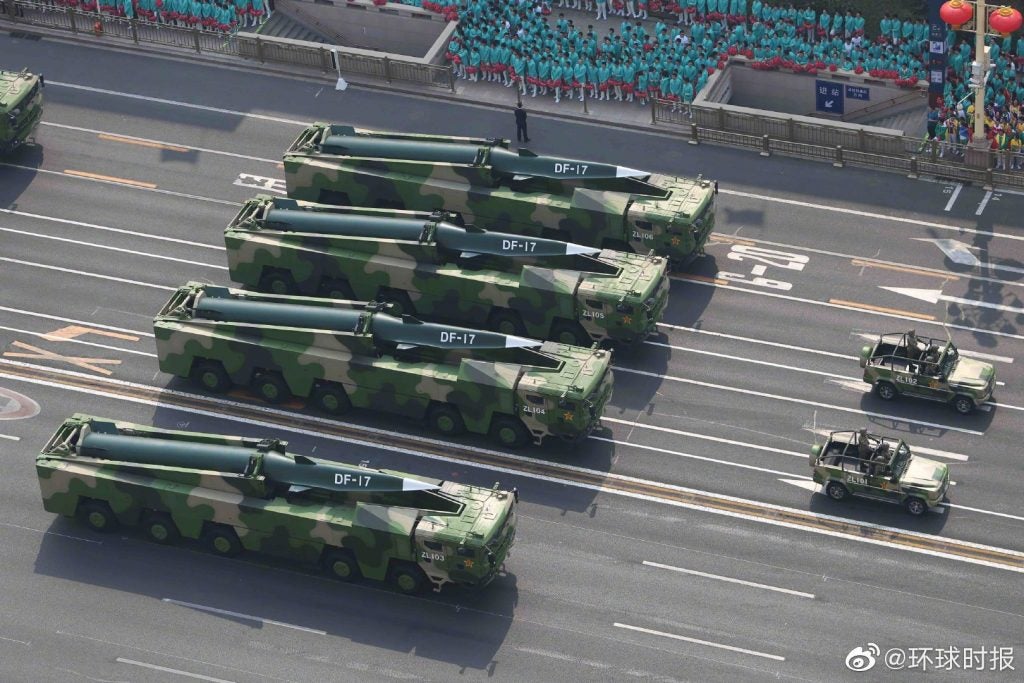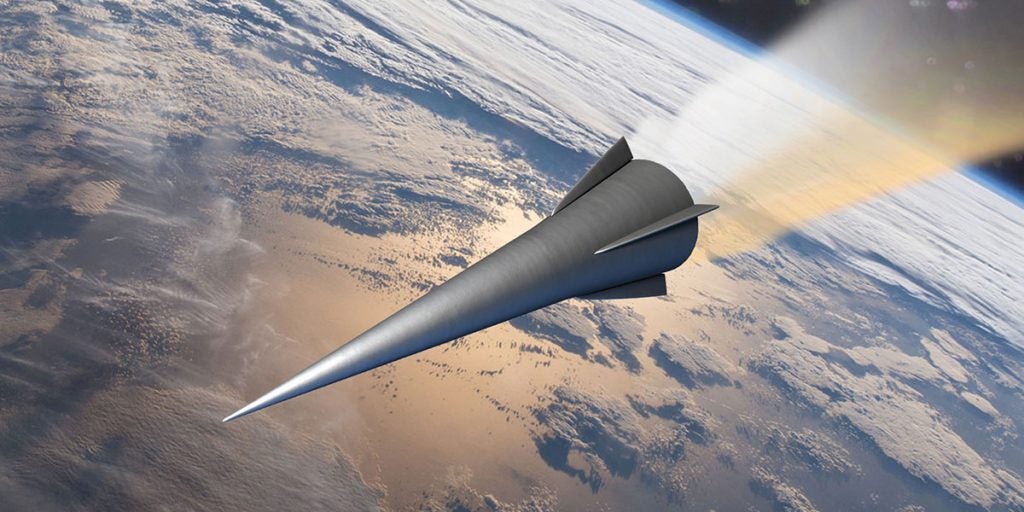General Atomics Joins US Hypersonic Program as China Shows Off its Operational DF-17
General Atomics Electromagnetic Systems (GA-EMS) joins Lockheed Martin, Raytheon, and Dynetics in the American quest to catch up to China’s lead in hypersonic weapons. The timing of the contract is interesting as it was signed the day before the PRC’s National Day parade. Here, celebrating the 70th anniversary of the PRC’s founding, the PLA showed off its first operational hypersonic glide weapon, the DF-17. Assuming the weapon is indeed operational and not merely a showpiece, then US fears that China would be the first to field a tactical hypersonic weapon have become a reality. In many ways, DF-17 is precisely the type of weapon the US Army itself intends to field from the Long Range Hypersonic Weapon (LRHW) program.
Unlike Russia’s Avangard which is a decidedly strategic weapon intended for nuclear delivery, DF-17 is a tactical weapon (ideally conventional) intended to attack heavily defended targets like airbases and aircraft carriers (assuming guidance hurdles are overcome). Compared to the Avangard which is launched from an ICBM (10,000-16,000 km range), the DF-17 uses the booster from the DF-16 SRBM (~1,000 km range). This allows the weapon to be more usable in a theoretical battle over the South China Seas/East China Sea region and less likely to be mistaken for a nuclear launch. The US has come to a similar conclusion, opting for tactical hypersonic weapons over strategic weapons with global reach. The US Army’s LRHW is going to be even smaller than DF-17 given the demand for each launcher to carry two missiles.

China’s lead in the development of hypersonic gliders isn’t a secret. While the American AHW program resulted in 2 successful test flights, the DF-ZF was test flown 7 times. This edge in design maturity has led to the fielding of DF-17 while we won’t see a comparable American system until 2023. This capability gap is seen as greater than any other which has resulted in a rush to field a system. Billions are being thrown in to get the LRHW and its sibling systems test flown as soon as possible. As mentioned earlier, a $42 million contract has brought General Atomics into the team that already consists of Lockheed Martin, Dynetics, and Raytheon. Specifically, this is the Electromagnetic Systems branch of General Atomics which is being brought on to assist in the design, production, analysis, and testing of the Common Hypersonic Glide Body (CHGB). GA-EMS was involved in the very successful AHW program that preceded CHGB, thus their involvement is welcome.

